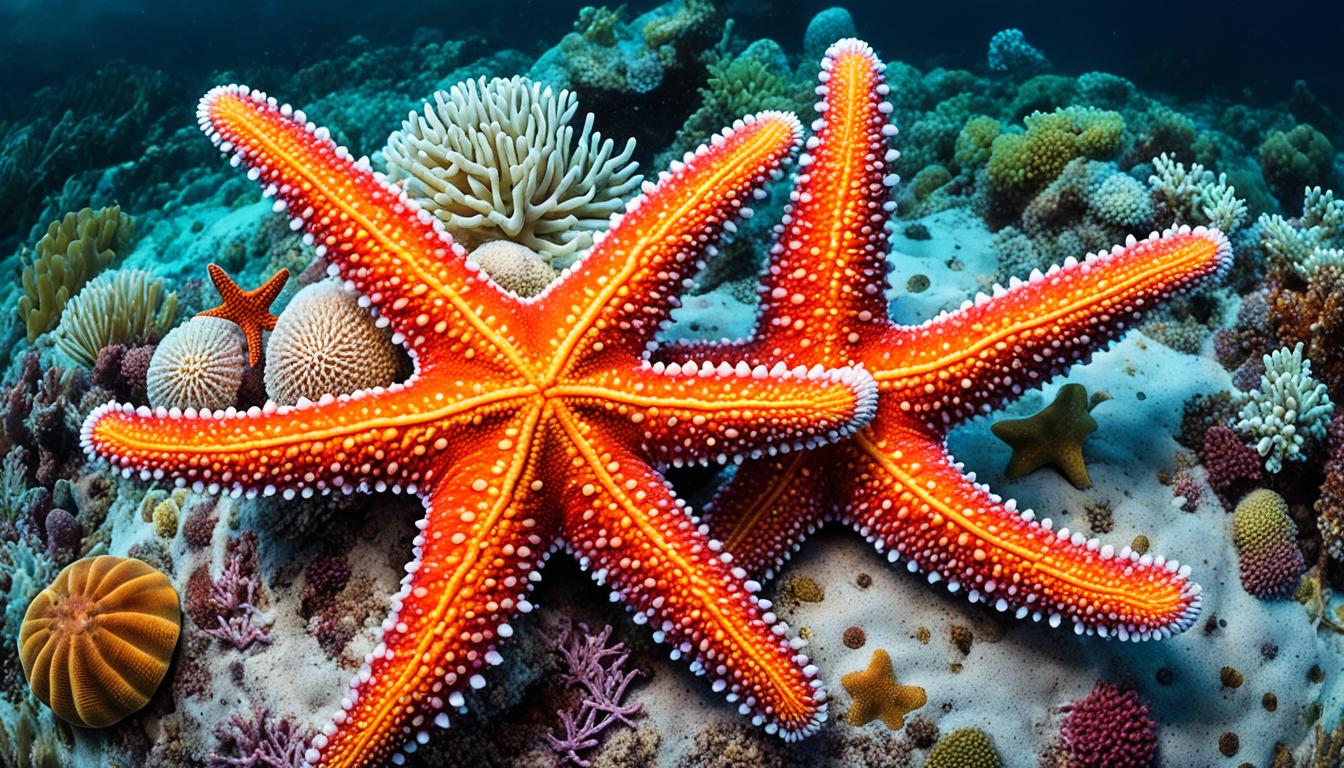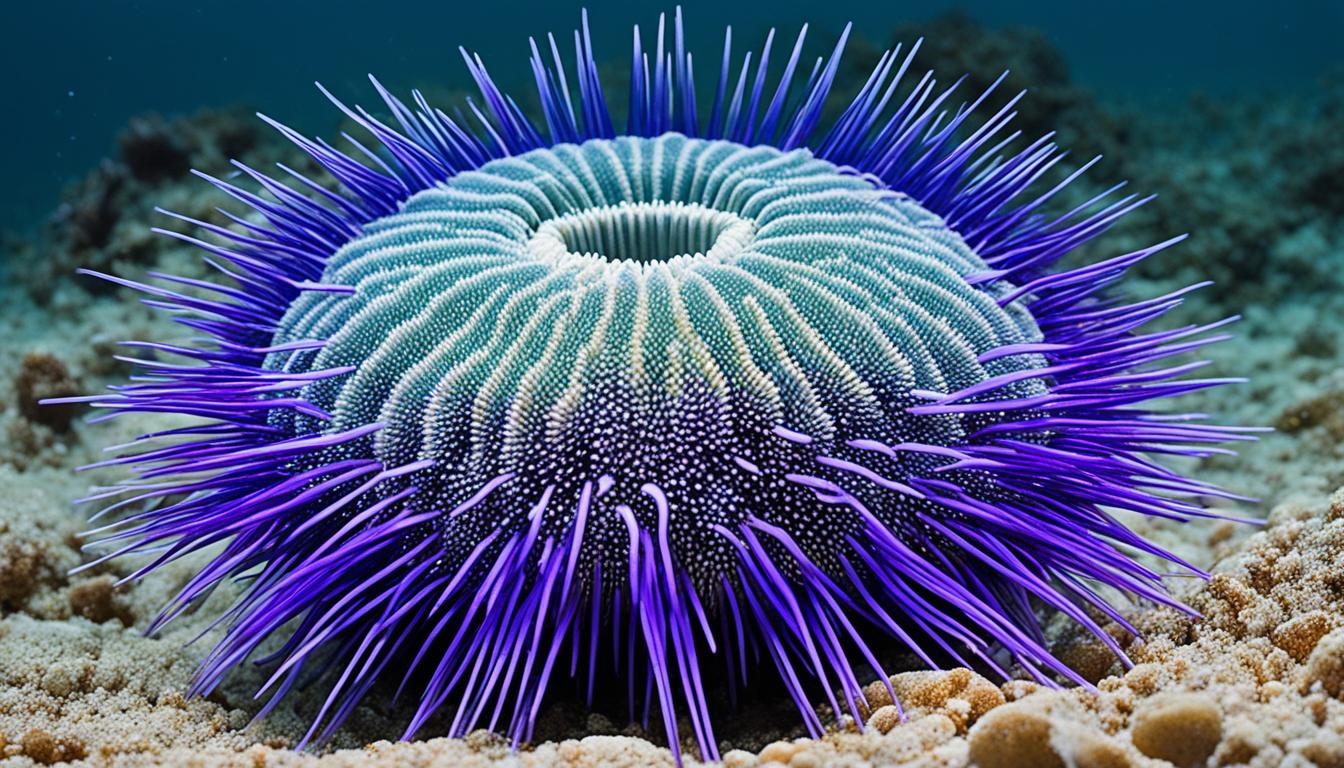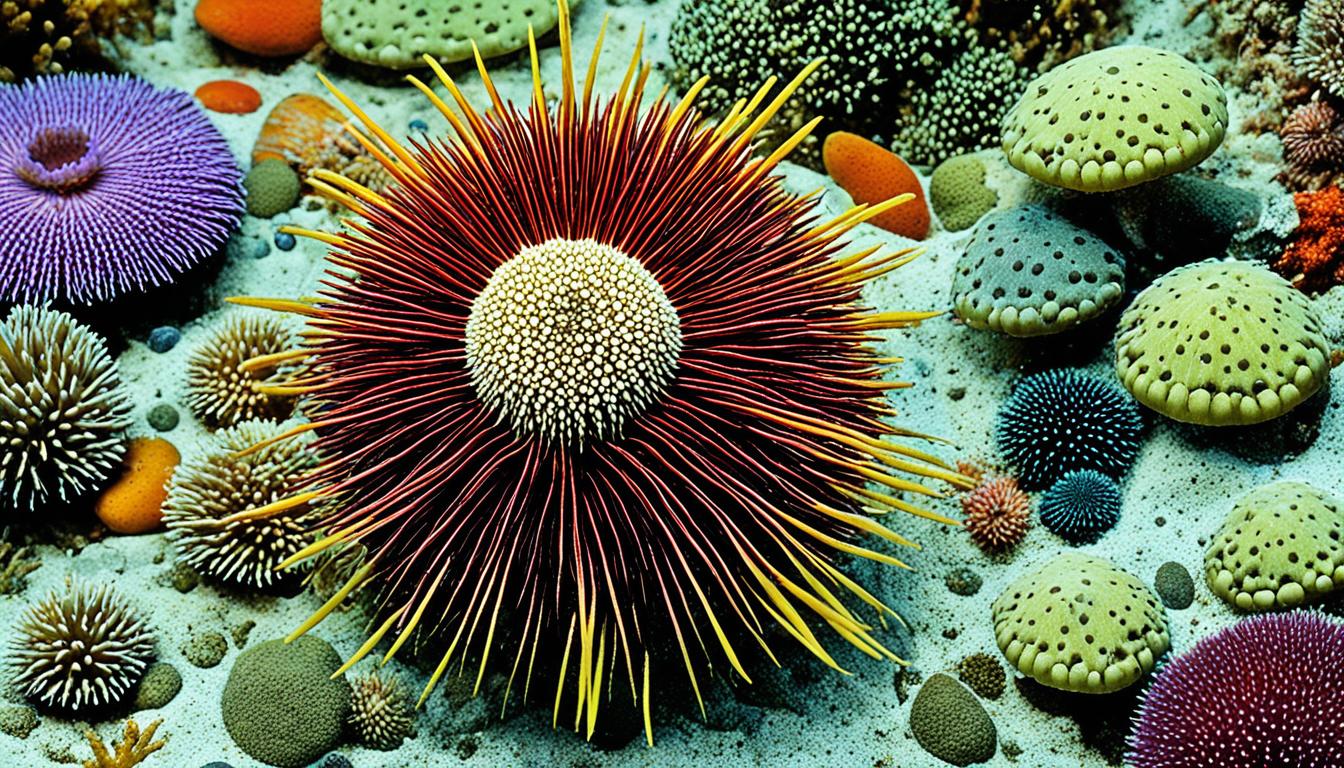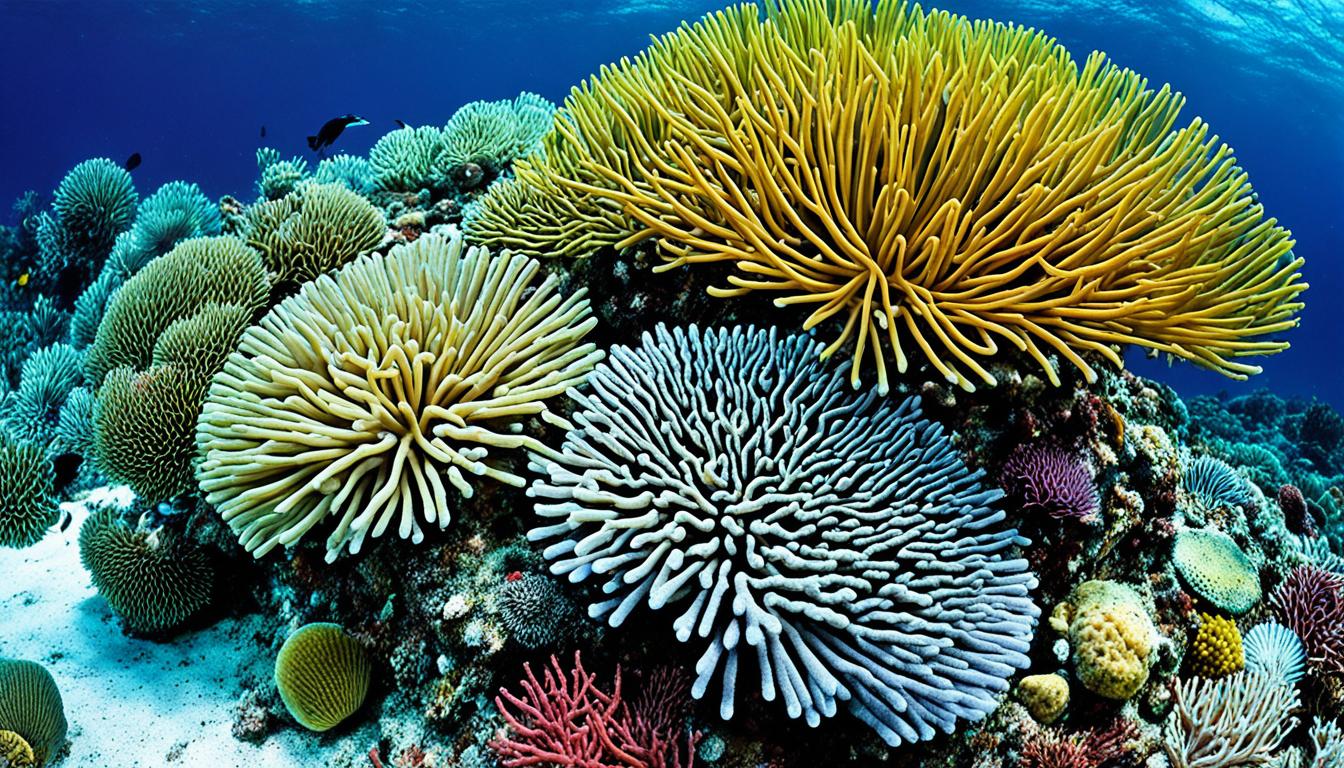Starfish, also known as sea stars, belong to the class Asteroidea. They are marine invertebrates with a star-shaped body. You might ask, what makes starfish so special? These creatures live in oceans all over the world, from warm tropical waters to the cold polar seas.
There are about 1,900 known species of starfish. They have unique features like tube feet that help them move and feed. They can also regrow lost arms and parts of their bodies. Learning about starfish shows how amazing they are and why they are important in the ocean.
It also helps clear up myths about them. So, let’s dive into the world of starfish and discover more about these incredible creatures.
Introduction to Starfish
Starfish, also called sea stars, are a group of fascinating marine animals. They belong to the echinoderm family. Unlike fish, they have a unique structure that makes them stand out. Let’s dive into the introduction to starfish and see what makes them special.
Starfish are key to the diversity of life in the ocean. They are part of the echinoderm group, which also includes sea urchins and sand dollars. These creatures play important roles in their environment. They help clean up the ocean by eating other animals.
Let’s look at why starfish are important:
- They keep the balance in marine habitats.
- They help with nutrient cycles in the ocean.
- Their special traits let them live in different places.
Learning about starfish deepens your knowledge of marine life. It shows how vital they are to the ocean. By understanding these creatures, you gain more insight into the diversity of the sea.
What are starfish?
Starfish, known scientifically as Asteroidea, are fascinating creatures in the echinoderm phylum. They have a unique scientific classification that shows their diversity and adaptations. This classification helps us understand their evolution and their roles in the ocean.
Scientific Classification of Starfish
Starfish, or sea stars, belong to the class Asteroidea and the phylum Echinodermata. This classification is key in marine biology, helping us identify the many species within this group. They have a body with radial symmetry and can have from five to fifty arms.
Common Names and Misconceptions
Marine experts prefer calling them “sea stars” to avoid confusion with true fish. This name highlights they are echinoderms, not fish. Many people think starfish swim, but they actually move by crawling on the ocean floor with their tube feet. Clearing up these myths helps us appreciate their special traits and ocean roles.
Starfish Facts: Unique Characteristics
Starfish are more than just fascinating to look at. Their unique shapes help them live in the ocean. They often look like stars with five arms, but some have more. Their skin is hard and colorful, helping them hide and protect themselves.
This look is not just pretty. It also helps them survive in the sea. Their bodies are designed to fit their environment perfectly.
Physical Features of Starfish
Starfish have a special way of moving through the water. They have arms with many tube feet that help them move and find food. These features let them live in many different places in the ocean.
They can move and eat in ways that other sea creatures can’t. This makes them very good at surviving in the ocean.
Starfish Regeneration Abilities
Starfish can grow back lost arms or even their whole body. This is a key way they stay alive when they face danger. They can quickly recover from big injuries.
This ability to regrow parts is vital for their survival. It lets them keep living and playing their role in the ocean.
Types of Starfish and Their Species
The ocean is home to a wide variety of starfish, each one adapted to its environment. There are about 2,000 known species, showing the starfish diversity. They can be grouped by their looks, where they live, and how they evolved. This classification helps us see the unique starfish in different oceans.
Diversity Among Starfish Species
Starfish come in many sizes and types. Some are tiny and live in shallow pools, while others, like the sunflower star, can grow over three feet wide. Here are some main categories:
- Asteroidea: This is the most common type, including stars like the ochre sea star.
- Ophiuroidea: These are brittle stars with long, flexible arms for moving around.
- Crinoidea: Feather stars have a stalk that anchors them to the sea floor.
Notable Starfish Species
Some starfish play big roles in their ecosystems. The crown-of-thorns starfish, for example, affects coral reefs. These starfish show how certain species help keep the ocean balanced and full of life. Here’s a table with some notable starfish and their features:
| Starfish Species | Distinct Features | Habitat |
|---|---|---|
| Ochre Sea Star | Colors range from yellow to orange; eats many mollusks. | Found in tidal zones and rocky areas. |
| Crown-of-Thorns Starfish | Looks spiny; eats a lot of coral. | Lives on coral reefs in the Indo-Pacific. |
| Sunflower Star | Can have up to 24 arms; moves fast; eats almost anything. | Found in coastal waters from Alaska to California. |
These starfish show the wide range of species and highlight the need to protect their homes.

Starfish Anatomy: Understanding Their Structure
Starfish have a unique anatomy that is both simple and complex. Their design helps them survive in different ocean environments. By looking at their body and internal parts, we can see how they live in their world.
Body Wall and Internal Mechanisms
The starfish’s body wall is thin, covered with a cuticle and a dermis layer. This layer is made of connective tissues and calcium carbonate ossicles. It gives support and protection. Inside, there are organs and systems for digestion and reproduction.
The body wall’s flexibility helps with movement. This helps starfish move around.
Water Vascular System Explanation
Starfish have a special hydraulic system called the water vascular system. Water goes in through the madreporite and moves through canals. This system is key for movement, helping the tube feet move and for catching food.
This system helps starfish live in the water.
Tube Feet Functions
Tube feet are vital for starfish. They help with movement and catching food. These feet stick to surfaces, let starfish explore, and help catch prey.
The way the water vascular system and tube feet work together shows how starfish can survive.
Starfish Habitat: Where They Live
Learning about starfish habitats helps us understand their importance in the ocean. These creatures live in many different places under the sea. They go from shallow, sunny areas to deep, dark parts of the ocean. This shows how well they can adapt and survive in various environments.
Global Distribution of Starfish
Starfish live in almost every ocean, from the cold Arctic to the warm waters near the equator. They can live in many places because they can handle different temperatures and salt levels. You might find them on rocky bottoms or in sandy areas, showing how flexible they are.
Environmental Conditions and Depths
Starfish need certain conditions to survive. They can live in a wide range of temperatures and salt levels. As you go deeper into the ocean, starfish can be found at great depths. This shows how they can handle the pressure and darkness of the deep sea.
Knowing about these conditions helps us understand starfish better. It also shows how climate change might affect their homes and the ocean as a whole.










